-
 +35 +1
+35 +1This small slice of the night sky contains 48,741 galaxies
This image makes me feel so incredibly small. Each of these 48,741 dots represents a galaxy. Each galaxy is a collection of billions of stars. The stars themselves trap untold planets, asteroids, and possibly even life in their gravitational clutches. But this image, which is just one-twentieth of the night sky, is a mere pinprick of a window into the universe. The universe is thought to be 93 billion light-years wide. The width of this image is 6 billion light-years.
-
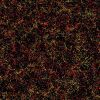 +20 +1
+20 +1Biggest galactic map will throw light on ‘dark energy’
An international team of astronomers has created the largest ever three-dimensional map of distant galaxies in a bid to help them understand one of the most mysterious forces in the universe.
-
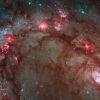 +20 +1
+20 +1Our universe could be reborn as a bouncing baby cosmos
A new model shows how the universe could survive a "big bounce" rather than a big bang, without the need for complex new physics. By Lisa Grossman. (July 11, 2016)
-
 +6 +1
+6 +1The Physics of Hope
I never liked physics much. I’m not just talking about the math. I don’t like what modern physics tells us: that time is an illusion, for one thing. That we live in a reality where everything that ever was, and ever will be, always is.... By Peter Watts.
-
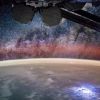 +44 +1
+44 +1Universe is expanding up to 9% faster than we thought, say scientists
Measurements taken by Hubble space telescope conflict with studies of radiation left over from Big Bang – fuelling theories of ‘dark energy’ and mystery particles...
-
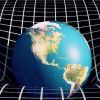 +17 +1
+17 +1Physicists just found a link between dark energy and the arrow of time
Is dark energy the reason time moves forward? By Brendan Cole. (May 20, ’16)
-
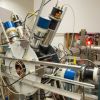 +8 +1
+8 +1Has a Hungarian physics lab found a fifth force of nature?
Radioactive decay anomaly could imply a new fundamental force, theorists say. By Edwin Cartlidge. (May 25)
-
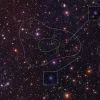 +9 +1
+9 +1Galaxy Cluster Spotted in Early Universe
Astronomers discover a vast collection of young galaxies from the early universe.Astronomers have discovered a collection of young galaxies, stretching more than 489 million by 244 million light-years whose light has taken 12 billion years to reach Earth, one of the most massive structures known at that distance - See more at: http://www.skyandtelescope.com/astronomy-news/galaxy-cluster-spotted-in-early-universe/?
-
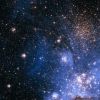 +30 +1
+30 +1Faintest early-universe galaxy ever, detected and confirmed
An international team of scientists has detected and confirmed the faintest early-Universe galaxy ever using the W. M. Keck Observatory on the summit on Maunakea, Hawaii. In addition to using the world's most powerful telescope, the team relied on gravitational lensing to see the incredibly faint object born just after the Big Bang. The results are being published in The Astrophysical Journal Letters today.
-
 +19 +1
+19 +1The beauty of space
Bubble nebula - All these pictures are stunningly beautiful and interesting af in my opinion. Not only do they make amazing wallpapers or are nice to look at for a few seconds but it amazes me what interesting stories are behind all of these pictures, its worth looking these pictures up and just get surprised at what you're actually looking at.
-
 +18 +1
+18 +1Why doesn’t physics help us to understand the flow of time?
From past to present, into the future: the flow of time is central to human experience. Why isn’t it central to physics? By Gene Tracy.
-
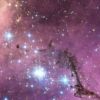 +28 +1
+28 +1Cosmic Speed Measurement Suggests Dark Energy Mystery
A new measurement of how fast space is expanding disagrees with estimates based on the early universe, potentially pointing toward a break from the standard model of physics. By Clara Moskowitz.
-
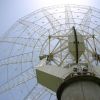 +36 +1
+36 +1Astronomers in South Africa discover mysterious alignment of black holes
Deep radio imaging by researchers in the University of Cape Town and University of the Western Cape, in South Africa, has revealed that supermassive black holes in a region of the distant universe are all spinning out radio jets in the same direction – most likely a result of primordial mass fluctuations in the early universe.
-
Analysis+3 +1
[1204.4658] Did the universe have a beginning?
We discuss three candidate scenarios which seem to allow the possibility that the universe could have existed forever with no initial singularity: eternal infation, cyclic evolution, and the emergent universe. The first two of these scenarios are geodesically incomplete to the past, and thus cannot describe a universe without a beginning. The third, although it is stable with respect to classical perturbations, can collapse quantum mechanically, and therefore cannot have an eternal past.
-
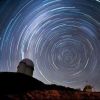 +45 +1
+45 +1Do we live in a special part of the universe?
We've already talked about how you're living at the center of the universe. Now, I'm not going to say that the whole universe revolves around you… but we both know it does. So does this mean that there's something special about where we live?
-
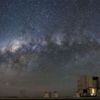 +22 +1
+22 +1Are the Constants of Physics Constant?
So far, they seem to be—but nobody really understands why. By Venkat Srinivasan.
-
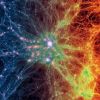 +24 +1
+24 +1Mind-Blowing Computer Simulation Recreates Our Universe
After 3 months of number-crunching, 8,000 computer processors working in parallel have recreated the evolution of our Universe in unprecedented detail.
-
 +25 +1
+25 +1The hidden neutrino
The explanation for some strange experimental results could lie in undiscovered particles called sterile neutrinos. By Laura Dattaro.
-
 +23 +1
+23 +1Cosmic Void Dwarfs Are a Thing and There’s a Problem With Them
Given how absurdly vast the cosmos is, with its hundreds of billions of galaxies, picturing it isn’t easy. You might think it natural, for instance, to see all these galaxies as more or less evenly spread out across the Universe. But you’d be wrong... By Ian Chant.
-
 +17 +1
+17 +1How time travel works in Star Trek
It's 2016, meaning we have now 50 years of Trek time paradoxes to explore. By Xaq Rzetelny.
Submit a link
Start a discussion




















